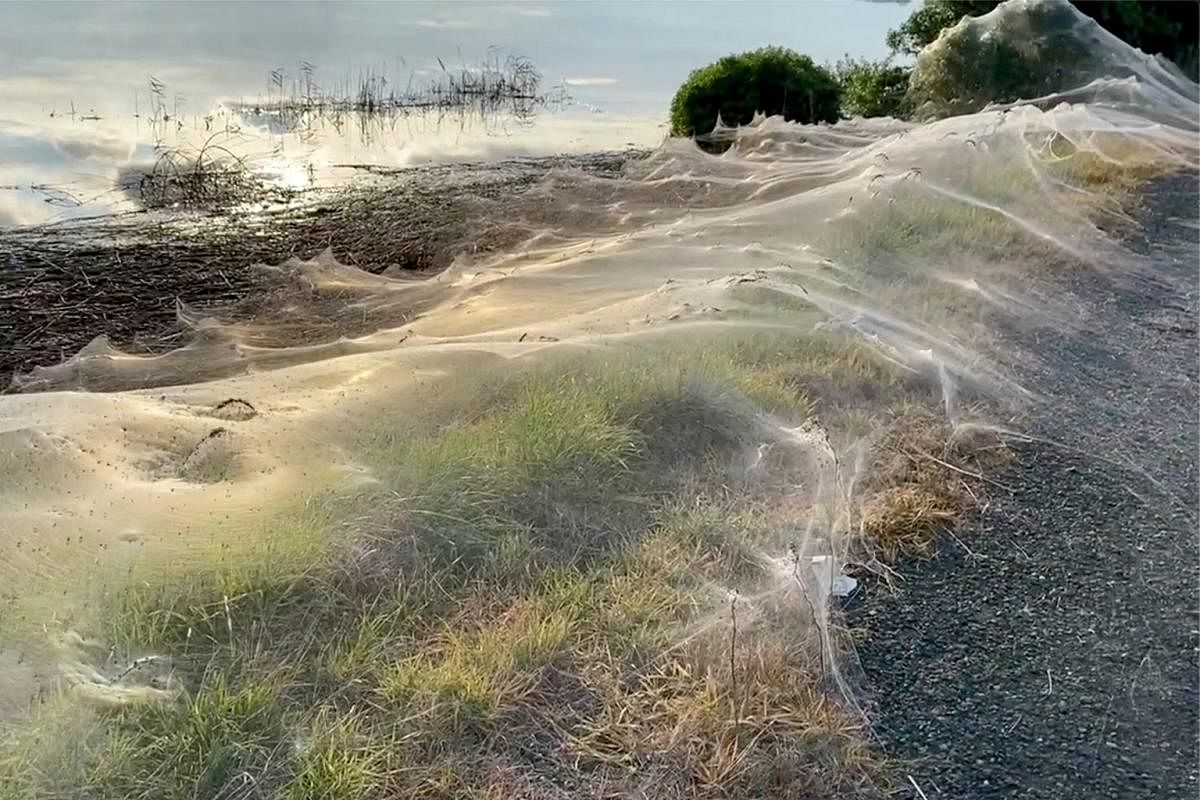Web of intrigue: Spiderwebs stretch across region in Australia after heavy rain

Sheets of spiderwebs stretched across trees and paddocks near towns in Australia recently hit by floods.
Heavy rains and strong winds struck large parts of Australia's south-eastern state of Victoria, causing flash flooding and widespread damage last week.
Residents in the Gippsland region woke up to the layers of cobwebs after days of heavy rain. The BBC reported that in one area, a spiderweb covered more than 1km along a road.
The intense rainfall has caused spiders to climb to higher ground using a survival tactic called ''ballooning'', in which the insects throw out silk that latches onto vegetation, allowing them to escape.
The spun webs stretched across trees, road signs and paddocks, creating huge ''gossamer'' sheets.
Dr Ken Walker, a senior insects curator from Museums Victoria, told The Age newspaper that it was likely that millions of spiders had thrown strands up to the surrounding trees.
''Ground-dwelling spiders need to get off the ground very quickly. The silk snakes up and catches onto vegetation and they can escape,'' he said.
According to the Australian Museum, ballooning involves spiders ''ascending to a high point on foliage and letting out fine silk lines that catch the breeze and eventually gain enough lift to waft the spider up and away''.
The website added: ''Simultaneous ballooning by thousands of spiderlings can result in a remarkable carpet of silk, called gossamer, covering shrubs or fields.'' Victoria state generally sees this natural phenomenon during winter, when it receives most of its rain.
Local councillor Carolyn Crossley told the BBC that she had gone down to a lake embankment on Monday evening to check for flood damage and was struck by the natural phenomenon.
''Everything was just shrouded in this beautiful gossamer spiderweb, all over the trees and fences,'' she said.
The delicate webs are expected to disintegrate later this week.
Send us your Big Picture
Do you have a Big Picture to share with us?
The image should be a recent one, with minimal digital enhancement. Send it to stimage@sph.com.sg with the title BIGPIC followed by a description of your photo. Images should be in jpg format and no more than 2MB in size.
Join ST's Telegram channel and get the latest breaking news delivered to you.
